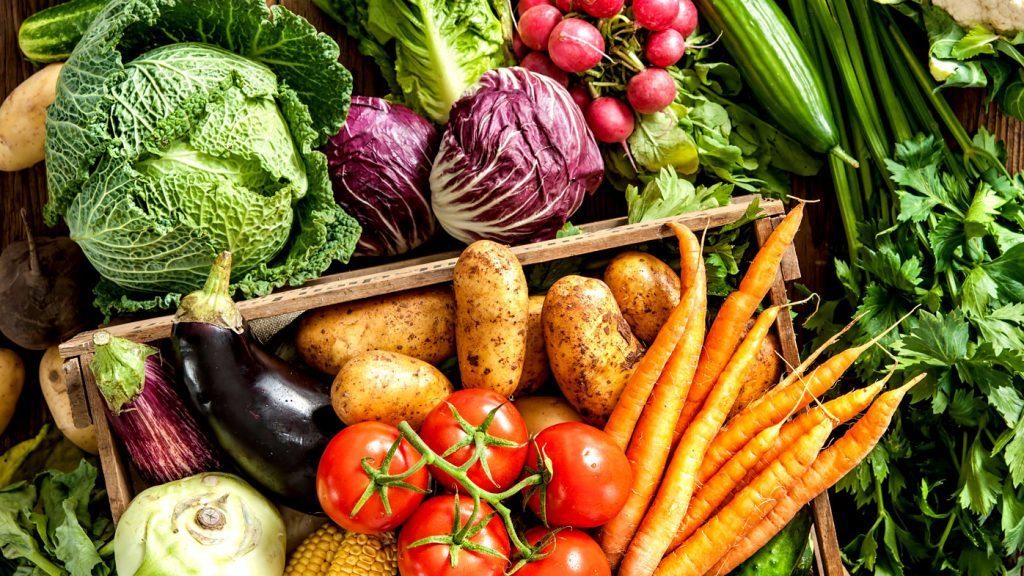Green vegetables promote mental and physical growth, increases memory and learning capacity, boosts immune system, prevents chances of diabetes and increases bone strength.
We all know that an essential part of a balanced diet is to consume enough amounts of fruits and vegetables, alongside some protein, fiber and carbohydrate items. Fresh produce is healthy, nutritious and beneficial for your body. However, fruits and vegetables are hated by toddlers and kids and it is a very difficult job for the parent to include fruits and vegetables in the diet of their child.
Some surprising health benefits of making fruits and vegetables a regular part of your diet, as proven by the United States Department of Agriculture are:
11 Amazing Health Benefits of Eating Green Vegetables for Kids
Promotes Mental and Physical Growth
Dark green vegetables like broccoli, beans and berries are packed with omega-3 fats, Vitamin B and low fat. Their antioxidant properties keep the brain strong and promote physical growth.
Increases Memory and Learning Capacity
Brain is a very hungry organ. Feed it with peanut butter, fruits like bananas, berries and use beans- a rich source of fiber, beans and complex carbs. The American Dietetic Association shows consuming vegetables and fruits can increase brain function and concentration.
Boosts Immune System
Fruits and vegetables high in vitamin C like Citrus fruits (lemons, oranges) and red bell pepper boosts immune system due to their phytonutrients and antioxidants.
Increases Bone Strength
Eat vegetables rich in vitamin C and calcium, yellow and green vegetables like bell peppers, spinach and broccoli increase bone density and increased bone mineralization, and maintenance of bone mass during the growing years.
Prevents Chances of Diabetes
Leafy green vegetables like spinach, kale, are low in calories, high in Vitamin C and reduce blood sugar levels. The antioxidants like lutein and zeaxanthin reduce chances of muscular degeneration.
Increases Energy
Bananas are rich in vitamin B6, carbohydrates and potassium. Sweet potatoes, apples, berries, lentils, oranges, strawberries and beans can also promote energy by refreshing the body by providing rich nutrient content.
Aids the Digestive System
Cooked vegetables are easy to digest. Green leafy vegetables, artichokes, squash and broccoli contain probiotics which protect the healthy bacteria in your gut and aid digestion by reducing inflammation and increasing digestive enzyme production.
Good Source of Necessary Nutrients
For a growing child it is very important to consume essential nutrients like sodium, protein, Vitamin A, calcium, iron and magnesium. A balanced diet including fresh vegetables supplies that.
Cleanses the Body
Junk food and unhealthy eating habits fill our body with toxins. Children prefer tasty food over nutritious ones and are prone to digestive problems. Vegetables and fruits rich in antioxidants and probiotics solve this by removing toxins.
Prevents Obesity
The World Health Organization agrees on how the low fat and sugar content of vegetables prevent excessive weight gain.
Helps to Maintain Healthy Skin And Healthy Hair
Vegetables and fruits are rich in mineral and nutrient content which nourish the skin and hair.
What Vegetables Should Your Child Eat?
Among green leafy vegetables, spinach is rich in Vitamin A and low in calories. Carrots, broccoli, brussels sprouts, kale, green peas, asparagus, cauliflower, red cabbage, collard greens and sweet potatoes are some other vegetables recommended. They contain rich antioxidants and provide the essential calcium, sodium, potassium and vitamin content in your child’s body.
How can I Interest My Kids Into Consuming Fruits And Vegetables?
Food items that look drab and don’t taste juicy or spicy like the usual fast food items like pizzas and hamburgers are not appealing to kids. In this age where they are used to so much of processed sugar in chocolates and candy bars, and fried chicken and oily food, getting them to consume healthy options is a major difficulty. However, as a parent here is what you can do.
For Toddlers
For toddlers, you can make the presentation fun by cutting up healthy vegetables like carrots and tomatoes into shapes like eyes, ears and nose. Imagine making a face with grapes, cucumbers, apples and some spinach. You can use a little ketchup as well. The snazzy and colorful plate is bound to attract even a fussy baby.
For Older Kids
For older kids, try adding fun twists by replacing their favorite food items with vegetable ingredients. You can use a cauliflower crust for pizza; add broccoli and spinach in your pasta or use ground quinoa or oats for making spaghetti dough. You can top nachos or tacos with healthy veggies like carrots, spinach, lettuce, tomatoes, beans and seeds. You can even make healthy pancakes by using banana and oats and milk. Buying a healthy salad dressing, or some nice mix of herbs like Italian spices can improve the taste of drab vegetables.
Make the process more fun by engaging the kids into the cooking process. Use a little amount of cheese or butter over the vegetable dishes to make it tastier. You can make healthy dips with eggs, yogurt and some flavours. Use guacamole, avocado, or nut butter. Turn the vegetables into healthy snacks: like cucumber or carrot slices.
You can try new recipes like tofu roasted with Indian flavor spices, bell pepper stuffed with potatoes and other veggies, cauliflower savory waffles with herbs, or baked zucchini fries. Make children understand the fruits and vegetables can be extremely yummy, fun and healthy!
Here are a few fun facts that can be interesting for your kids and you:
- A United States ruling changed tomato from being a fruit to being a vegetable in the year 1893.
- Tomatoes are also the most consumed vegetable in the US.
- Bell peppers are most commonly green, but they grow in shades of purple, red and yellow too!
- Potatoes are only 20% solid, the rest of its 80% is just water dissolved with Vitamin C and other nutrients!
- You can actually dye your hair red using beets temporarily.
- The outside of a cucumber can remove pen ink on paper.
- If you attach electrodes to a lemon in a proper laboratory setting, it can generate power.
Sources
https://www.ncbi.nlm.nih.gov/pmc/articles/PMC3649719/













